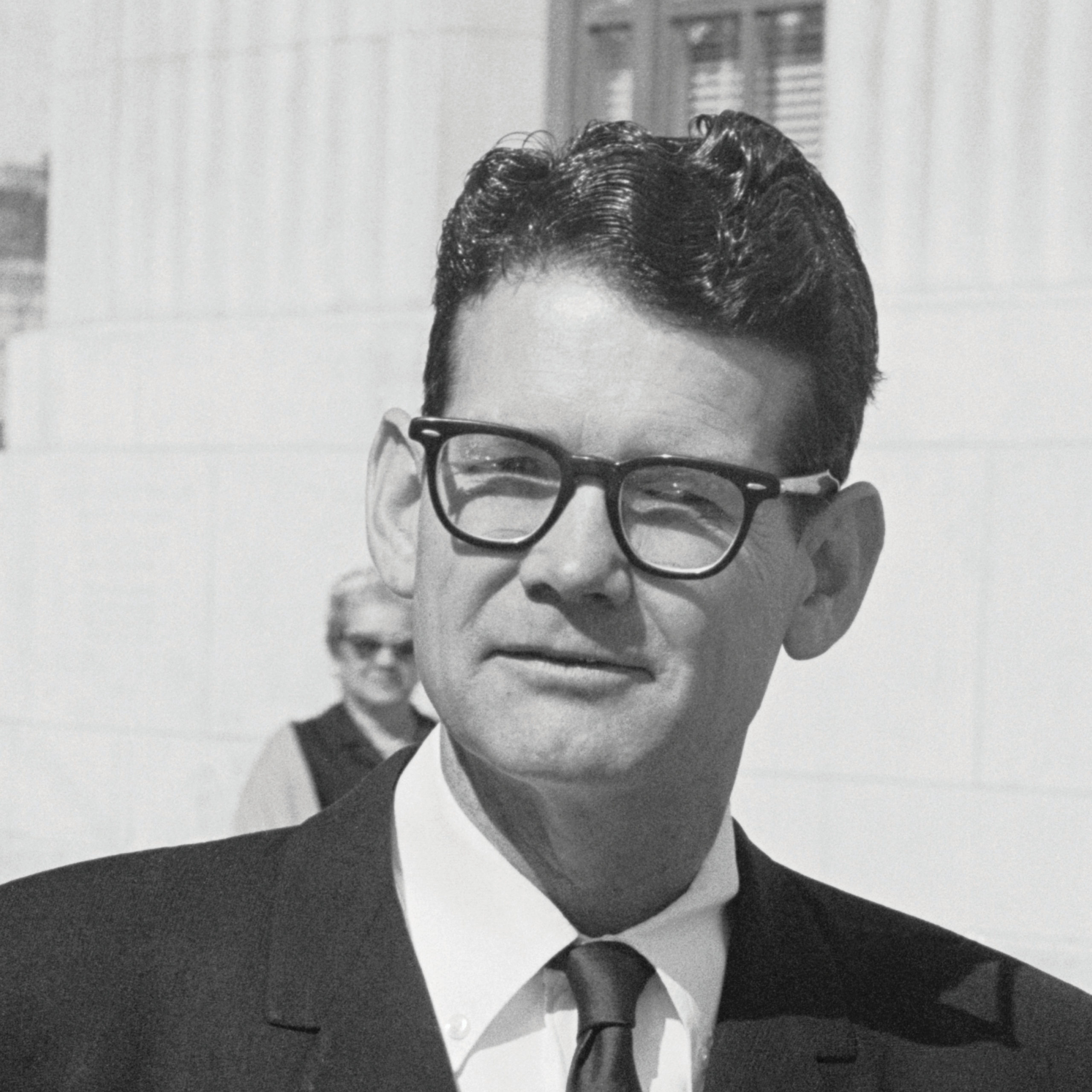Sept. 24, 1962: Estes scandal goes to court

Billie Sol Estes. Photo by Thomas O'Halloran/PhotoQuest/Getty Images.
By the time his first trial was set to begin, Billie Sol Estes was already a national celebrity: a cotton and fertilizer mogul at age 37, a lay evangelist of Christian-based business principles and an accused con man whose manipulation of federal subsidies and Ponzi-style scheming sent political tremblors from his Texas hometown of Pecos to Washington, D.C.
He’d already made the cover of Time magazine. Folk songs were written about him. And when the jury pool reported to the Smith County courthouse on Sept. 24, 1962, a media mob was on hand to chronicle a Texas rags-to-riches story too good to be true.
Moved from West to East Texas on a change of venue, the trial stalled before it could begin when the defense asked the judge to scale back the overwhelming media presence in the courtroom. The resulting hearing was carried on live TV as reporters and cameramen snaked their way through a standing-room-only courtroom, burrowing lenses and microphones in front of lawyers, witnesses and the waiting jury pool. After two days of chaos, the judge continued the case to ponder ways to rein it in.
The scene was excessive even for the splashy Estes, who by age 18 had parlayed small bank loans into $38,000 from government grain sales. By age 35, he was worth $40 million from a conglomeration of enterprises that included a trucking firm, a mortuary and a newspaper.
Like most farmers, Estes depended on government subsidies. Unlike most, Estes surrounded himself with influence: entertaining politicians, bankers and agriculture officials at his massive Pecos ranch home or flying them to business meetings on his private plane, even as his empire began to implode.
That implosion began in February 1962 with a story in the Pecos Independent and Enterprise revealing thousands of mortgages filed on local fertilizer tanks that didn’t seem to exist. No names were mentioned, but it was common knowledge that Estes had been paying cash to local farmers for the use of their credit—signing notes for tanks that were leased back to him.
The scheme was even more brash in detail. Individual tanks were identified by metal tags. When due diligence was demanded, a handful of tanks were retagged and relocated as bank officials were shuttled from site to site. By the time he was arrested by the FBI, Estes had borrowed $22 million using notes on 34,000 tanks that did not exist.
Suspicious death
Spectacular as the fertilizer fraud seemed to be, it was the curious death of Henry Marshall, a minor federal agriculture agent, that catapulted the Estes narrative from newsworthy to explosive. In June 1961, months before the Estes scandal went public, Marshall was found dead alongside his truck at his Texas ranch. Though he’d been shot five times by a .22 caliber bolt-action rifle found with him, local officials ruled he died by suicide. Marshall’s death remained a matter of local curiosity until it was revealed, weeks after Estes’ arrest, that Marshall had been actively involved in thwarting another Estes straw-buyer scheme.
Since the 1930s, the federal government had subsidized cotton prices in exchange for limits on production. Allotments, based on acreage, were nontransferable—except where land had been taken by eminent domain. Using the loophole, Estes located farmers whose land had been seized for highways and other public projects and offered to buy their now-useless allotments. Estes sold them parcels of West Texas land on credit, transferred the allotment and leased back the land for $50 per acre in advance. Estes later foreclosed, and the farmers kept the cash.
When the Smith County trial reconvened, Estes was convicted and sentenced to eight years in prison. In June 1965, the U.S. Supreme Court overturned that conviction based on the media disruption during the first two days of his trial. By then, however, Estes had been sentenced to 15 years on federal charges of mail fraud and conspiracy. In 1979, he was convicted of fraud and concealing assets while still owing $30 million in back taxes.
In 1984—23 years after the fact—a grand jury in Texas declared Marshall’s death a homicide for which no one was ever charged.



